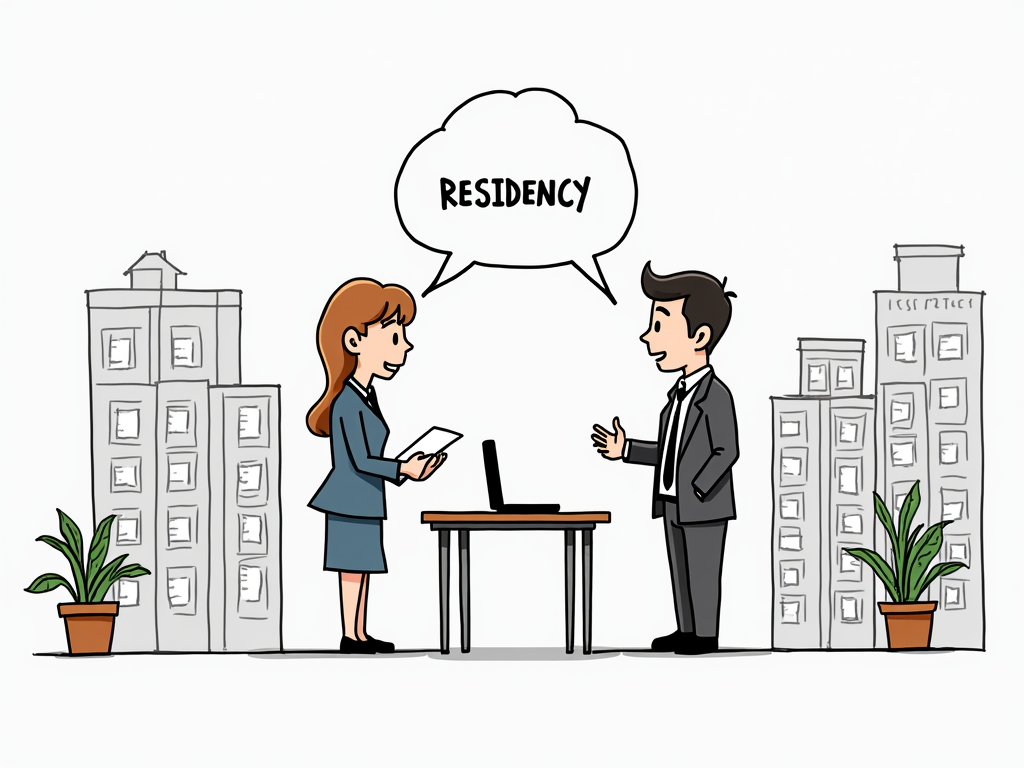
Investing in Greece’s Historical Properties: A Renaissance of Opportunity
Reading time: 12 minutes
Table of Contents
- Introduction to Greek Historical Properties
- Market Overview: Greece’s Historical Real Estate Landscape
- Investment Opportunities in Different Regions
- Restoration Challenges and Considerations
- Legal Framework and Investment Incentives
- Success Stories: Transformation Narratives
- Financial Insights and ROI Analysis
- Sustainability and Cultural Preservation
- Your Greek Heritage Investment Blueprint
- Frequently Asked Questions
Introduction to Greek Historical Properties
Ever dreamed of owning a piece of history bathed in Mediterranean sunlight? You’re not alone. Greece’s historical properties represent more than just real estate—they’re portals to a 3,000-year-old civilization that shaped Western thought, architecture, and culture.
Today, these timeworn treasures stand at a fascinating crossroads between preservation and opportunity. For investors with vision, the crumbling neoclassical mansions of Athens, Byzantine-era structures on mountaintops, and centuries-old stone dwellings on Aegean islands aren’t just romantic notions—they’re tangible assets with remarkable potential.
As one restoration specialist put it: “When you restore a historical Greek property, you’re not just renovating a building—you’re continuing a story that began generations ago.”
But let’s be clear: This isn’t a path for the faint-hearted investor. It’s for those who appreciate that the most rewarding investments often come wrapped in complexity. The Greek historical property market demands patience, cultural sensitivity, and a willingness to navigate bureaucratic labyrinths worthy of Daedalus himself.
Market Overview: Greece’s Historical Real Estate Landscape
Greece’s historical property market has evolved dramatically since the 2008 financial crisis that sent values plummeting by up to 45% in some areas. Now, we’re witnessing what many experts call “the Greek revival”—a renaissance of interest in properties with historical significance.
According to the Bank of Greece, property prices have steadily increased since 2018, with historical properties in prime locations seeing appreciation rates of 7-12% annually over the past three years. This recovery isn’t uniform, however. The market resembles a mosaic rather than a single canvas.
Current Market Metrics
Historical properties in Greece generally fall into several distinct categories, each with unique investment characteristics:
| Property Type | Average Price (€/m²) | Typical Restoration Cost (€/m²) | Appreciation Potential (5yr) | Rental Yield Potential |
|---|---|---|---|---|
| Neoclassical Mansions (Athens, Nafplio) | 2,300 – 4,500 | 1,200 – 2,800 | 15-25% | 4-6% (after restoration) |
| Island Stone Houses (Cyclades, Ionian) | 1,800 – 3,200 | 1,000 – 2,000 | 20-30% | 5-8% (seasonal) |
| Traditional Village Homes (Mainland) | 800 – 1,500 | 700 – 1,500 | 10-18% | 3-5% |
| Ottoman/Byzantine Structures | 1,200 – 2,800 | 1,500 – 3,000 | 12-20% | 3-6% |
Market Dynamics and Buyer Profile
The market for historical Greek properties has attracted a diverse international investor base. European buyers (particularly German, French, and British) comprise approximately 65% of foreign investors, followed by Americans (15%), and increasingly, buyers from the Middle East and Asia (12%).
What’s driving this interest? Beyond the romantic appeal of owning a piece of history, several practical factors are at play:
- Greece’s Golden Visa Program – Offering residency permits for property investments exceeding €250,000
- Remote Work Revolution – Creating demand for character-filled properties with modern connectivity
- Tourism Resilience – Greece’s tourism showed remarkable recovery post-pandemic, with visitor numbers in 2022 reaching 88% of 2019 levels
- Value Proposition – Historical properties still offer value compared to similar Mediterranean markets like Italy or Southern France
As Maria Kalogeropoulou, a heritage property specialist in Athens, notes: “We’re seeing a new breed of buyer—one who values authenticity and is willing to embrace the challenges of restoration for the reward of creating something truly unique.”
Investment Opportunities in Different Regions
Investment Appeal by Region (Scale 1-10)
Athens and Surroundings
Athens offers a compelling proposition for historical property investors, particularly in neighborhoods like Plaka, Monastiraki, and Thiseio, where neoclassical buildings from the late 19th and early 20th centuries stand in the shadow of the Acropolis.
The 2004 Olympics triggered significant infrastructure improvements, while the post-2008 crisis created buying opportunities that savvy investors are now capitalizing on. Neoclassical buildings requiring restoration can still be found for €1,500-2,500/m², while fully restored properties command €4,000-6,000/m².
Pro Tip: Look beyond the obvious tourist zones to emerging neighborhoods like Kypseli and Metaxourgeio, where historical properties can be acquired at 30-40% lower prices while still offering strong appreciation potential as these areas undergo gentrification.
Island Opportunities
The Greek islands present distinctive investment profiles based on their architectural heritage:
Cycladic Islands (Santorini, Mykonos, Paros) feature iconic white-washed cube houses with blue accents. While Mykonos and Santorini command premium prices, lesser-known islands like Syros, with its remarkable neoclassical architecture, offer better value propositions. On Santorini, traditional cave houses carved into the caldera can command restoration costs of €2,000-3,000/m² but yield exceptional returns as boutique accommodations.
Ionian Islands (Corfu, Kefalonia) showcase Venetian architectural influences. In Corfu’s Old Town, a UNESCO World Heritage site, historical properties typically start at €2,500/m² unrestored, while commanding €5,000-7,000/m² after expert renovation. The rental potential here is strong, with restored historical properties achieving 6-9% annual returns.
Quick Scenario: Imagine investing in a 120m² historical stone house on Crete for €180,000, spending €220,000 on restoration, and creating a property valued at €550,000-600,000—while generating €35,000-45,000 in annual rental income during the extended Mediterranean tourist season.
Restoration Challenges and Considerations
Restoring historical Greek properties comes with unique challenges that blend technical complexity, cultural sensitivity, and regulatory navigation. Here’s what you need to know before embarking on your restoration journey:
Regulatory Frameworks and Heritage Protection
Greece classifies historical buildings into several protection categories, each with specific restoration requirements:
- Category A (Absolute Protection): Buildings of exceptional historical significance with stringent restoration guidelines permitting minimal modifications
- Category B (Partial Protection): Buildings allowing interior modifications while preserving façades and key architectural elements
- Category C (Character Protection): Buildings requiring preservation of general architectural character but allowing more substantial modifications
As restoration architect Dimitris Papanikolaou explains: “The key is understanding what you’re working with before you begin. A preliminary assessment by a heritage specialist can save thousands of euros and months of delays by identifying protection status and permissible interventions early in the process.”
Technical Challenges and Solutions
Historical Greek properties present distinct technical challenges:
- Seismic Considerations: Greece is seismically active, requiring structural reinforcements that respect historical integrity while ensuring safety
- Moisture Management: Particularly in coastal areas and older stone structures, addressing rising damp and salt-related deterioration requires specialized approaches
- Energy Efficiency: Balancing modern comfort with historical preservation through solutions like underfloor heating, discreet insulation, and traditional passive cooling techniques
- Infrastructure Integration: Incorporating modern plumbing, electrical systems, and connectivity while preserving historical elements
“The most successful restorations,” notes conservation specialist Elena Konstantopoulou, “are those that embrace rather than fight a building’s age. Modern comfort doesn’t have to come at the expense of character—the key is finding the balance.”
Legal Framework and Investment Incentives
Navigating the legal landscape for historical property investment in Greece requires preparation and local expertise. Let’s break down the essentials:
Ownership Structures and Tax Considerations
Foreign investors typically have three ownership structures to consider:
- Direct Personal Ownership: Simplest approach but potentially less tax-efficient
- Greek Limited Company (EPE or IKE): Offers liability protection and potential tax advantages
- European Holding Structure: For larger investments, EU-based holding companies may optimize tax efficiency
Annual property taxes in Greece include:
- ENFIA (Unified Property Tax): While historical properties aren’t exempt, properties undergoing approved restoration may qualify for reduced rates
- Municipal Taxes: Typically 0.025-0.035% of property value
- Income Tax: Rental income is taxed at 15-45% for individuals (progressive rate) or at the corporate rate of 22% for companies
Pro Tip: Engage a tax specialist familiar with both Greek regulations and your home country’s tax system before finalizing your investment structure. The right setup can significantly impact long-term returns.
Investment Incentives for Historical Properties
Greece offers several incentives specifically targeting historical property investment:
- Development Law 4399/2016: Provides subsidies up to 45% for qualifying restoration projects that will operate as tourism businesses
- Tax Credits for Restoration: Up to 30% of restoration costs can be offset against future income tax in certain cases
- EU Heritage Funding: Programs like Creative Europe and regional development funds occasionally offer grants for heritage preservation
- Golden Visa Program: €250,000 property investment threshold for non-EU investors seeking residency permits
“For serious heritage investors, these incentives can significantly improve project economics,” explains Georgios Mavridis, a specialist in Greek investment law. “But they require careful planning and often specialist assistance with applications.”
Success Stories: Transformation Narratives
Case Study 1: The Hydra Captain’s House
When British couple Richard and Sarah Mackenzie purchased a dilapidated sea captain’s house on Hydra for €320,000 in 2017, they faced what looked like an impossible task. The 1780s stone structure had severe structural issues, no modern utilities, and protection status that limited intervention options.
Working with local architect Vassilis Theodoropoulos, they employed traditional building techniques and materials—lime-based mortars, hand-crafted wooden elements, and locally-sourced stone. The 18-month restoration cost approximately €450,000 but created a property now valued at over €1.2 million.
“The key was accepting that we were temporary custodians rather than owners,” Richard explains. “We worked with the building rather than forcing modern expectations onto a historical structure.”
The property now generates €55,000 annually as a premium vacation rental, representing a yield of approximately 7% on total investment—while the Mackenzies enjoy several weeks there themselves each year.
Case Study 2: Athens Neoclassical Apartment Building
A more commercial example comes from German investment group Altbau Capital, which acquired a neglected 1890s neoclassical building in Athens’ Exarchia neighborhood for €630,000 in 2019. The 650m² structure contained six apartment units in various states of disrepair.
The €840,000 restoration preserved the ornate façade, restored original features like marble staircases and decorative ceilings, while completely modernizing interiors with smart home technology and energy-efficient systems.
Upon completion in 2021, the building was valued at €2.1 million. Rather than selling, Altbau converted the units to long-term rentals targeting digital nomads and academics, achieving a 7.5% annual yield while retaining the appreciating asset.
“Historical buildings in emerging neighborhoods offer the perfect blend of character and investment potential,” notes Altbau’s director Klaus Müller. “The premium that tenants will pay for authentic heritage features consistently exceeds our projections.”
Financial Insights and ROI Analysis
Let’s examine the numbers behind historical property investments in Greece with clear-eyed pragmatism:
Investment Models and Returns
Historical property investments typically fall into three broad strategies, each with distinct return profiles:
- Restore and Sell: Purchase, restore, and flip the property, typically targeting a 25-35% gross margin on total invested capital over an 18-36 month period
- Restore and Rent: Focus on rental yields, which typically range from:
- 4-6% for long-term residential rentals in urban locations
- 6-9% for seasonal tourist rentals in prime locations
- 7-12% for boutique hotel or high-end hospitality concepts
- Hybrid Usage: Combined personal use and rental, prioritizing lifestyle benefits alongside financial returns
Quick Scenario: Consider a 180m² traditional stone house on Crete purchased for €180,000. With restoration costs of €270,000 (€1,500/m²), your total investment reaches €450,000. As a premium vacation rental, the property could generate €40,000-50,000 annually (8-11% yield) while also appreciating at 4-6% per year in value.
Financing Considerations
Financing options for historical restoration projects in Greece have evolved in recent years:
- Traditional Greek Mortgages: Available to foreign buyers but typically limited to 60-70% loan-to-value with rates from 3.5-5%
- International Financing: Some investors leverage home-country equity or portfolio-backed credit at potentially more favorable terms
- Developer Partnerships: Local developers sometimes offer joint venture arrangements, particularly for larger projects
- Heritage-Specific Loans: A few specialized lenders offer products designed for historical restorations with more flexible terms for protected buildings
“The financing landscape for heritage properties is challenging but improving,” notes Maria Economou of Heritage Finance Advisors. “The most successful investors typically bring 50-60% equity and secure the remainder through creative structuring rather than relying solely on traditional mortgages.”
Sustainability and Cultural Preservation
The most successful historical property investments honor both environmental sustainability and cultural authenticity. This dual approach not only fulfills ethical obligations but increasingly drives premium valuations and rental rates.
Sustainable Restoration Approaches
Contemporary restoration best practices emphasize sustainability through:
- Traditional Building Techniques: Many historical Greek building methods (thick stone walls, cross-ventilation, strategic shading) were inherently sustainable and can be enhanced rather than replaced
- Local Materials Sourcing: Using regional materials reduces carbon footprint while maintaining authentic character
- Energy Efficiency Innovations: Discreet solar installations, water reclamation systems, and high-efficiency HVAC solutions that respect historical integrity
- Adaptive Reuse: Repurposing historical spaces for contemporary needs rather than defaulting to new construction
As sustainability architect Eleni Papadimitriou explains, “The most sustainable building is the one that already exists. Historical properties represent embodied carbon and cultural value that new construction simply cannot replicate.”
Cultural Authenticity and Community Integration
Beyond physical restoration, successful historical property investments honor cultural contexts through:
- Community Engagement: Involving local craftspeople and artisans in restoration work
- Heritage Interpretation: Telling the building’s story through thoughtful design elements
- Supporting Local Economies: Creating employment and supply chain opportunities within communities
- Respecting Neighborhood Dynamics: Ensuring new uses complement rather than disrupt existing community patterns
“The most valuable historic properties today are those that tell authentic stories,” notes cultural heritage consultant Sophia Antoniadis. “Modern travelers and buyers are increasingly sophisticated—they can distinguish between superficial ‘heritage-washing’ and genuine cultural respect.”
For investors, this translates to premium returns: properties that authentically honor local building traditions and cultural contexts consistently command 15-25% higher rental rates than those with generic luxury renovations.
Your Greek Heritage Investment Blueprint
As you contemplate bringing a piece of Greek heritage back to life, consider this actionable roadmap to transform aspiration into achievement:
Strategic Entry Points (Next 12-18 Months)
- Targeted Regional Focus: Rather than casting too wide a net, identify 2-3 specific regions that align with both your investment goals and personal connection to Greece. The Peloponnese and lesser-known Cycladic islands currently offer particularly favorable value propositions.
- Assemble Your Specialist Team: Before viewing a single property, connect with:
- A heritage-specialized architect who understands restoration parameters
- A legal advisor versed in historical property regulations
- A local property manager with restoration project experience
- Set Realistic Budgetary Parameters: Establish a total project budget with a minimum 25% contingency specifically for restoration uncertainties
- Consider Starting Smaller: Your first Greek heritage project should be manageable enough to serve as a learning experience without overwhelming financial exposure
- Invest in Pre-Purchase Assessment: The €2,000-4,000 spent on thorough structural and regulatory assessment can save ten times that amount in unexpected costs later
Remember, successful heritage investors approach their projects with both passion and pragmatism. As Nikolaos Papadopoulos, who has restored properties across the Greek islands, puts it: “Honor the soul of the building, but negotiate the price with your head, not your heart.”
The renaissance in Greek historical properties isn’t simply a market trend—it’s a confluence of cultural preservation, investment opportunity, and the enduring human desire to connect with history in tangible ways. Whether you seek a connection to Greece’s remarkable past, a distinctive investment with appreciation potential, or simply a unique place to buy home in greece, the pathway to heritage property ownership begins with understanding both its challenges and its profound rewards.
What piece of Greek history will you help write the next chapter for?
Frequently Asked Questions
What legal restrictions apply specifically to foreign buyers of historical properties in Greece?
Foreign buyers face few restrictions purchasing most Greek properties, including historical ones. However, properties in border regions and some islands require special permissions through a straightforward application process. For historical properties specifically, the key restriction isn’t nationality-based but category-based—buildings with higher heritage protection classifications (Categories A and B) require approval from the Ministry of Culture for certain modifications regardless of who owns them. Non-EU buyers should note that historical property investments above €250,000 qualify for the Golden Visa program, offering residency permits renewable every five years.
How do seasonal factors affect restoration timelines and costs in different Greek regions?
Seasonality significantly impacts both restoration planning and execution across Greece. In island locations, the May-September tourist season creates labor shortages and premium pricing for construction services, often increasing costs by 15-25%. Conversely, mainland winter conditions (particularly in mountainous regions) can halt exterior work from December-February. The optimal approach varies by region: island restorations ideally commence in October with completion targeted before April, while mainland projects benefit from spring starts. Additionally, material transportation to islands becomes more reliable and economical in the off-season. Smart investors build season-appropriate buffer periods of 2-3 months into project timelines to accommodate these regional variations.
What specialized insurance considerations apply to historically significant properties in Greece?
Insuring historical Greek properties requires specialized coverage beyond standard homeowner policies. Key considerations include: higher reconstruction valuations accounting for period-appropriate craftsmanship (typically 30-80% above standard construction); specific coverage for historical elements like frescoes, mosaics, or architectural features; vacancy coverage during lengthy restorations; and robust liability protection for properties open to visitors. While mainstream Greek insurers offer limited options for historical properties, several European specialty insurers provide comprehensive heritage property coverage. Expect premiums 40-60% higher than standard properties, with requirements for enhanced security and fire protection systems. The investment in specialized coverage is essential—standard policies rarely provide adequate protection for the unique risks and valuations of historical structures.

Article reviewed by Devon Bergnaum, Residential Property Consultant | Helping Clients Find Dream Homes, on May 5, 2025



